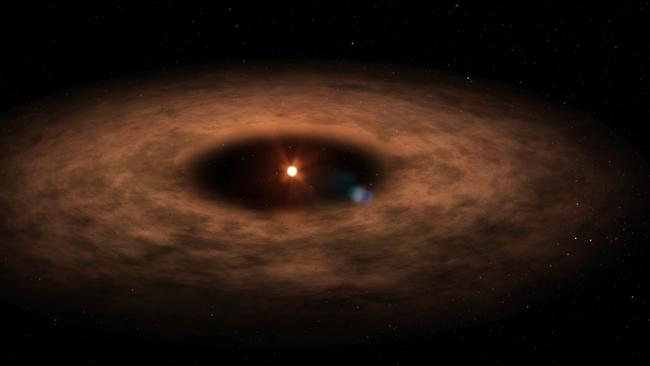NASA recruits ‘alien hunters’ to find signs of life in outer space
US space agency NASA is recruiting volunteer “alien hunters” to spot new planets and “pursue a common goal of understanding our universe”.
US space agency NASA is recruiting “alien hunters” to find signs of life in images taken from planets in other solar systems in outer space.
Seeking volunteers from across the world, NASA has launched a citizen science project called Planet Patrol to detect new planets from millions of images collected by its computer system.
Since the 1990s, scientists have discovered more than 4200 exoplanets, which are worlds that orbit stars other than the Earth’s sun.
NASA wants to take advantage of interested people’s time to examine the different extraterrestrial environments, some of which may host life.
It is inviting volunteers to join the hunt for new exoplanets by examining images snapped by the Transiting Exoplanet Survey Satellite (TESS), which has been orbiting the Earth since 2018.
Planet Patrol will become a “community pursuing the common goal of understanding the universe and our place in it,” NASA said.
It launched Planet Patrol on Zooniverse, earlier this week, and has already recruited more than 1,600 participants who have collectively delivered 100,000 individual classifications.
The program enables anyone with an internet connection to spot and classify likely exoplanets in images taken by TESS.
“Citizen science projects are a great way to engage our built-in, never-ending curiosity about the world we live in — be it our own planet or a planet a hundred light years away,”
NASA research scientist Veselin Kostov said.

He said the project launch was particularly welcome for people isolating during the COVID-19 pandemic.
TESS is designed to spot exoplanets as they pass in front of the stars they orbit, dimming the star’s brightness.
Once the exoplanet’s existence has been confirmed, scientists can then start to determine the planet’s basic properties and whether any type of life, including extraterrestrial intelligence (SETI), could find it habitable.
The hundreds of thousands of pictures TESS takes each year are analysed by automated software.
But computers may accidentally detect an exoplanet when all the image shows is a dimming of light caused by a binary system containing two rather than one star, with one eclipsing the other.
“The most common impostors are eclipsing binary stars,” Kostov said.
Other false positives were caused by instruments or “astrophysical noise” distorting the TESS images.


Kostov said the human eye was much more reliable than automated processing.
“The human eye is very good at quickly and reliably spotting such image distortions,” he said.
Via the program on Zooniverse, Planet Patrol participants are guided through a process of evaluating the quality of TESS images.
They then must distinguish between potential false positives and bona-fide planet candidates.
“It’s an extremely rewarding and enjoyable experience for us and, hopefully, for them as well,” said Kostov.
“My hope is that the project sparks a continuous interest in exoplanets in particular and in astrophysics in general.”
Another project NASA is undertaking is to detect whether alien life really exists on these exoplanets.
Its researchers have turned to looking for the shadows of one of Earth’s most common multicellular life forms: trees.
Professor Chris Doughty, lead author of the landmark new study, said in a statement: ”Earth has more than three trillion trees, and each casts shadows differently than inanimate objects.
“If you go outside at noon, almost all shadows will be from human objects or plants and there would be very few shadows at this time of day if there wasn’t multicellular life.”
The researchers suggest abundant upright photosynthetic multicellular life such as trees will cast shadows at high sun angles.
This, the researchers believe, will probably distinguish them from single cellular life.
As a result, space telescopes will observe the types of shadows cast which should theoretically determine whether there are similar life forms on exoplanets.
Originally published as NASA recruits ‘alien hunters’ to find signs of life in outer space

